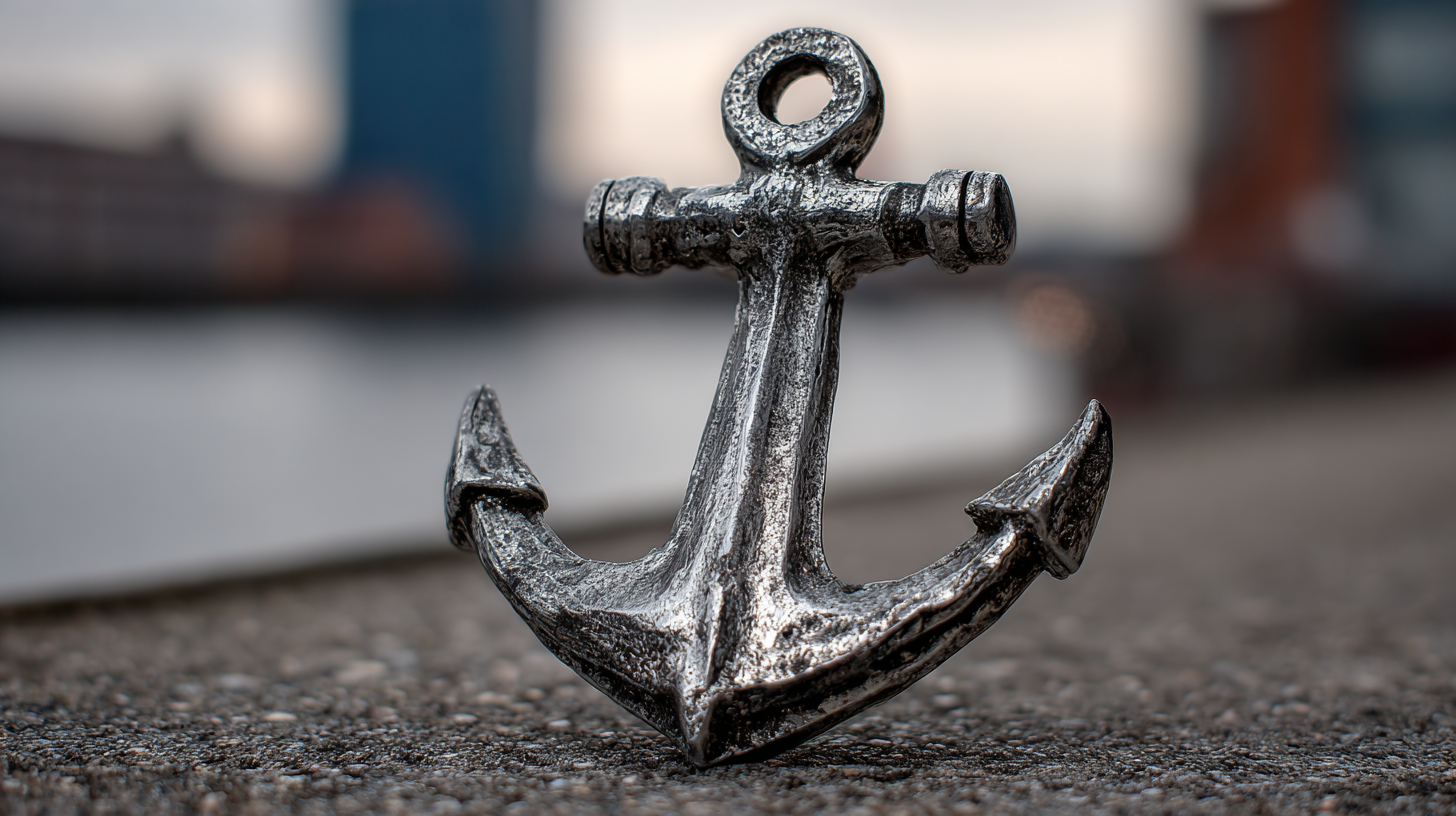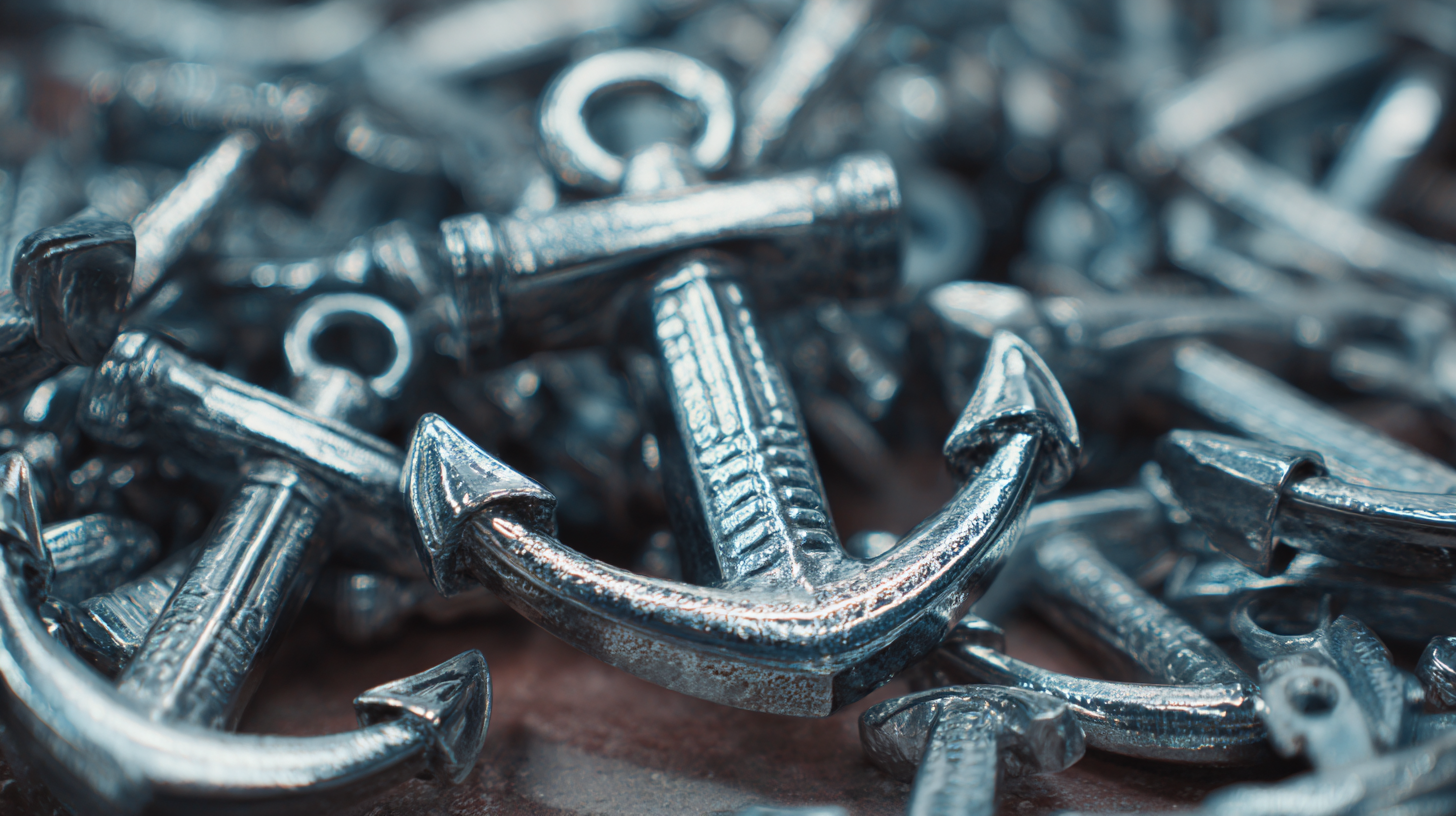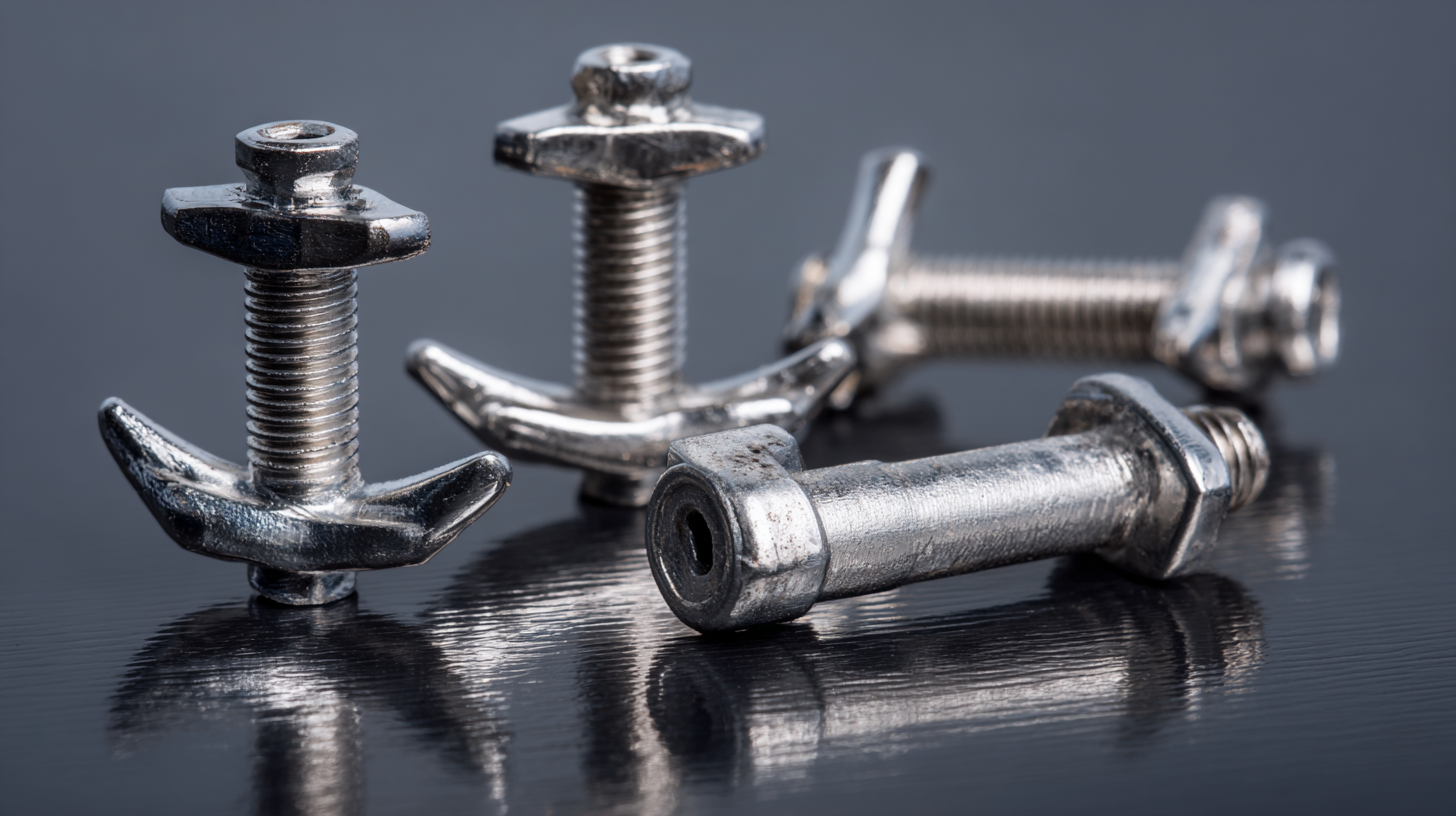
The Ultimate Guide to Choosing the Best Stainless Steel Anchors for Your Global Supply Needs
In the construction and marine industries, the demand for durable and reliable fastening solutions has led to the increasing popularity of stainless steel anchors. According to a recent industry report from MarketsandMarkets, the global anchor and chain market is expected to reach $1.1 billion by 2025, driven by the growth in marine infrastructure and shipping activities. Stainless steel anchors are favored for their excellent corrosion resistance, strength, and longevity, making them ideal for various applications, from shipbuilding to high-rise construction. As global supply chains face challenges and the need for quality materials becomes more pronounced, understanding how to choose the best stainless steel anchor is crucial for maintaining safety and performance standards. This guide aims to provide insights into selecting the right stainless steel anchors to meet diverse supply needs, ensuring that your projects stand the test of time.

Understanding the 2025 Market Trends for Stainless Steel Anchors in Global Supply Chains
As we move towards 2025, the stainless steel anchors market is poised for significant growth within the global supply chain, reflecting broader trends in industrial fasteners. The overall market is set to rise from USD 90.57 billion in 2025 to USD 104.12 billion by 2029, at a steady CAGR of 3.5%. This growth will be influenced by increasing demands in various sectors, including construction and renewable energy, which rely heavily on reliable anchoring solutions to ensure structural integrity and sustainability.
In particular, the construction anchor market demonstrates promising expansion, anticipated to evolve with innovative materials and technologies designed to enhance performance. As builders and engineers continuously seek durable, corrosion-resistant solutions, stainless steel anchors are becoming increasingly sought after. Additionally, the growing solar fasteners market, projected to nearly double in size by 2033, indicates a significant shift towards renewable energy projects that will further drive the demand for high-quality anchoring products. Understanding these market trends will be crucial for suppliers aiming to position themselves effectively in the dynamic landscape of 2025 and beyond.

Key Factors to Consider When Selecting Stainless Steel Anchors for Different Environments
When selecting stainless steel anchors for various environments, it is crucial to consider the specific conditions they will face. Factors such as humidity, salinity, and temperature fluctuations can significantly impact the performance and longevity of the anchors. For coastal or marine applications, opt for anchors made from 316 stainless steel, which offers superior corrosion resistance compared to 304 stainless steel due to its higher nickel and molybdenum content. This choice ensures durability and reliability in harsh conditions, such as saltwater and humid climates.
In contrast, for applications in less aggressive environments, such as indoor or freshwater settings, 304 stainless steel anchors may be sufficient. However, it is still essential to assess the overall structural integrity and load-bearing capacity required for the project. Additionally, considering the anchor design—whether it’s a wedge, screw, or toggle anchor—can influence performance. Understanding the specific application and environmental challenges will guide you in making an informed choice, ultimately leading to enhanced safety and efficiency in your construction or marine projects.
The Ultimate Guide to Choosing the Best Stainless Steel Anchors for Your Global Supply Needs
| Environment | Anchor Type | Material Grade | Load Capacity (lbs) | Corrosion Resistance |
|---|---|---|---|---|
| Marine | Eye Bolt | 316 | 1000 | Excellent |
| Industrial | Sleeve Anchor | 304 | 600 | Good |
| Concrete | Wedge Anchor | 316 | 800 | Excellent |
| Coastal | Toggle Bolt | 304 | 500 | Fair |
| Cold Weather | Expansion Bolt | 316 | 700 | Excellent |
Comparative Analysis of Stainless Steel Anchor Types: Advantages and Disadvantages
When it comes to selecting the best stainless steel anchors for your global supply needs, understanding the different types available is crucial. The most common types of stainless steel anchors include wedge anchors, sleeve anchors, and drop-in anchors. Wedge anchors are known for their strong holding power and ease of installation, making them ideal for heavy loads. However, they require a pre-drilled hole and may not be suitable for all base materials.
On the other hand, sleeve anchors offer versatility and can be used in various applications, providing a reliable bond in both solid and hollow substrates. Their disadvantage lies in their slightly lower load capacity compared to wedge anchors, particularly in cracked concrete. Drop-in anchors are another option, favored for their flush installation that allows for a clean appearance. They excel in concrete applications but require a specific installation depth, potentially limiting their use in thinner materials. Each of these anchor types has its own set of advantages and disadvantages, making it essential to analyze your specific requirements before making a choice.
Industrial Standards and Certifications for Quality Assurance in Stainless Steel Anchors
When selecting stainless steel anchors, understanding industrial standards and certifications is crucial for ensuring quality and safety in global supply chains. The American Society for Testing and Materials (ASTM) offers standards such as ASTM A 193 and ASTM A 320, which outline specifications for stainless steel anchors used in high-stress environments. According to the International Organization for Standardization (ISO), adherence to ISO 9001 can significantly enhance product reliability and client satisfaction. This standard focuses on quality management systems and is essential for manufacturers aiming to meet international client expectations.

Additionally, certifications such as the American National Standards Institute (ANSI) and the CE marking for European markets serve as vital indicators of quality and compliance. A recent report by Research and Markets indicates that the global demand for stainless steel anchors is projected to reach USD 3.5 billion by 2027, driven by industrial growth and infrastructure development. Ensuring that products meet or exceed these standards not only aids in compliance but also fosters trust among consumers and businesses alike. Choosing anchors certified by these reputable organizations can mitigate risks associated with product failures in critical applications.
Innovative Solutions and Technologies Shaping the Future of Stainless Steel Anchors in Supply Solutions
As the demand for durable and reliable fastening solutions continues to rise, innovative technologies are redefining the production and application of stainless steel anchors. According to a report by MarketsandMarkets, the global anchor systems market is projected to reach $4.2 billion by 2025, growing at a CAGR of 5.9%. This growth is primarily driven by advancements in materials technology and engineering processes, which enhance the corrosion resistance and load-bearing capacity of stainless steel anchors. Manufacturers are increasingly utilizing precision engineering techniques to create anchors that meet stringent performance standards while ensuring ease of installation.
In addition to traditional manufacturing advancements, the incorporation of smart technologies into stainless steel anchors is gaining momentum. For instance, IoT-enabled anchors can monitor structural integrity in real-time, providing critical data to prevent failures in critical infrastructure projects. The introduction of 3D printing in anchor production offers another layer of innovation, allowing for customized designs that meet the specific needs of diverse industries, from marine to construction. Together, these emerging solutions not only elevate the performance of stainless steel anchors but also enhance their adaptability to meet global supply needs efficiently.
The Ultimate Guide to Choosing the Best Stainless Steel Anchors
This chart illustrates the quantity of various types of stainless steel anchors required for global supply needs. It helps in understanding the demand across different anchor types.
